





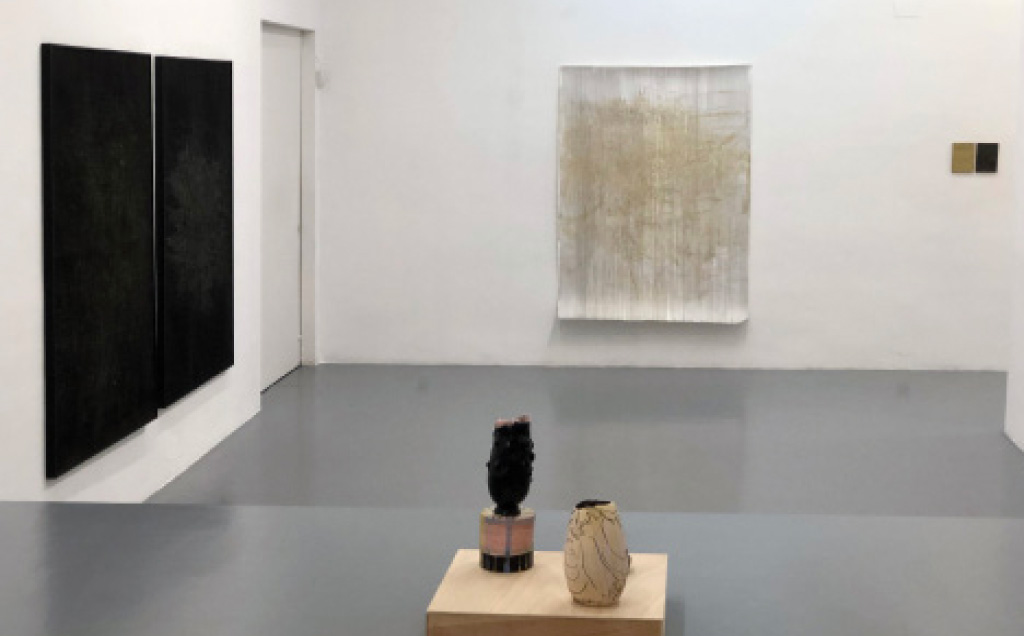
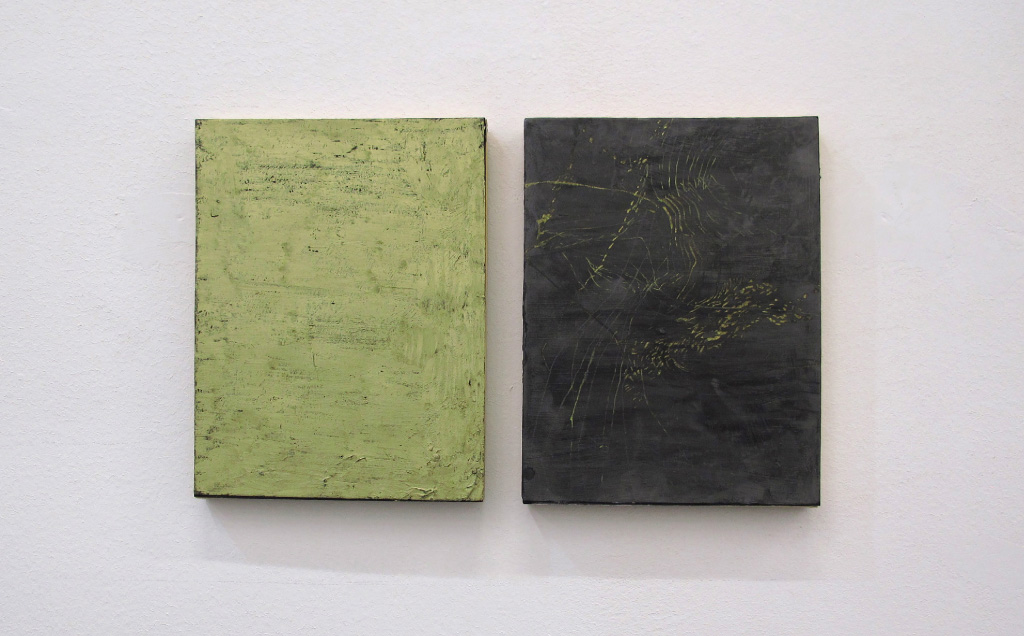
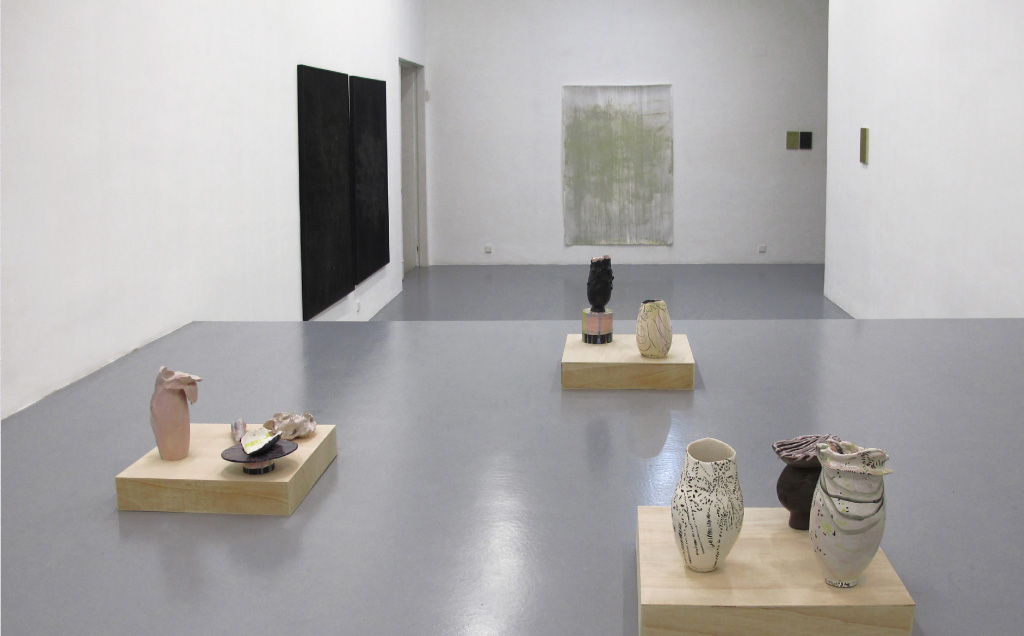
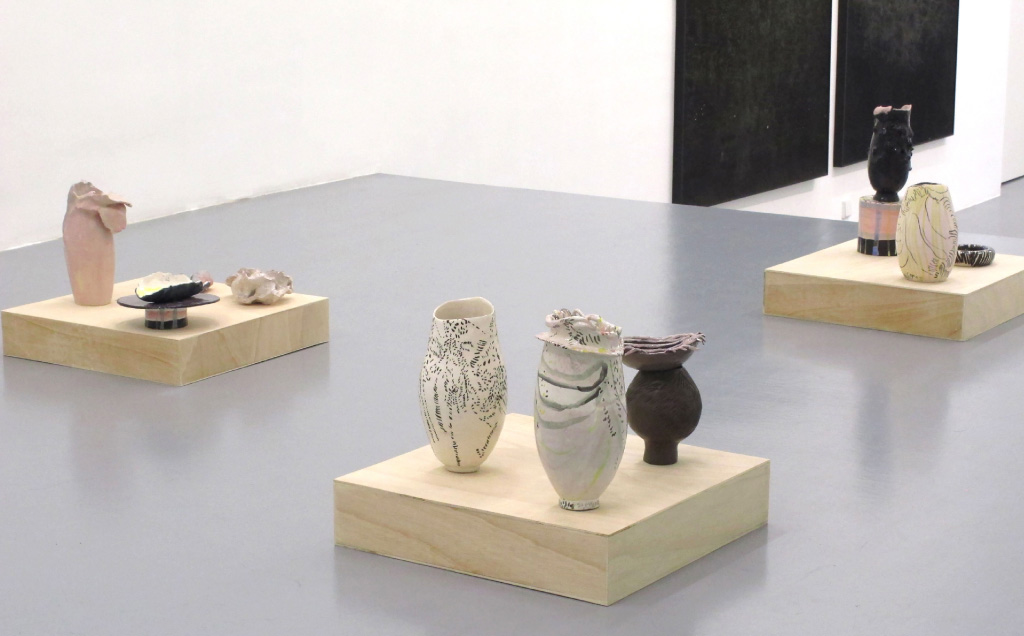
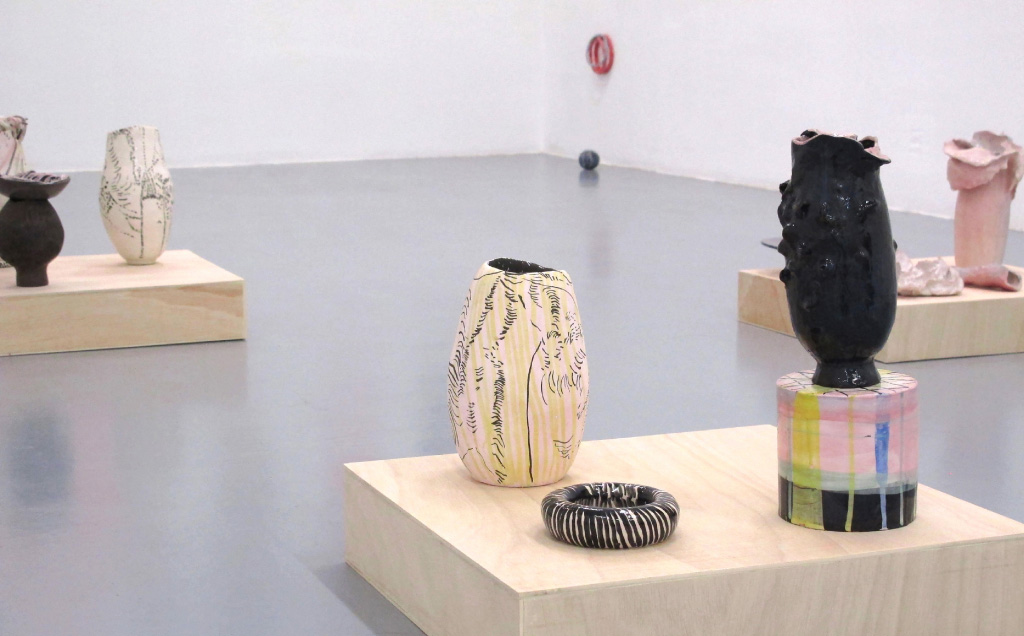



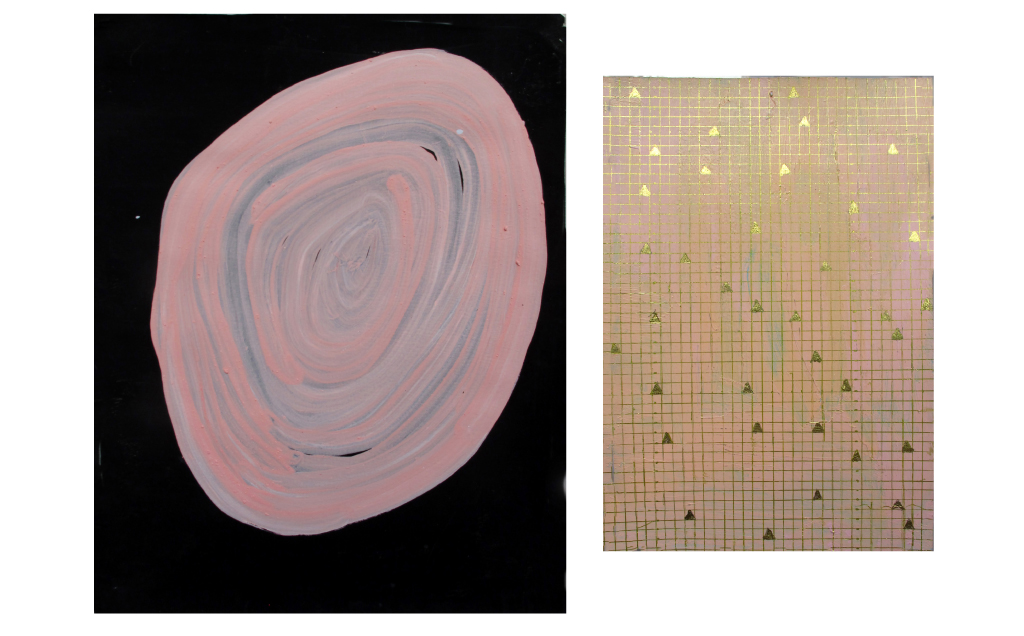




Ruth Morán_Clay, papel and scissors_11/22/19_01/13/20_Dossier
Ruth Morán’s painting has the brief registry of a poem. It is like the image of a rumour; it is emotional and affective, chaotic while simultaneously measured and reflective. As if it were trying to explore the subject by calling on the memory of forms. We are speaking of painting that embraces the derive, a kind of enigma where everything takes on a specular nuance. In this work it is clear that seeking is as important as discovering. Painting is form; it is the path but also the pretext. Ruth Morán reveals and conceals. There is a loss of scale as the graphic presence emerges as something latent, as a trace mark embracing the sense of loss Georges Didi-Huberman refers to when he states that “the modality of the visible becomes ineluctable -that is, condemned to a question of being- when seeing is feeling that something ineluctably escapes us: in other words, when seeing is losing” (“What We See Looks Back at Us, 1997). For the poetic act begins just where speaking is impossible, as the language of Ruth Morán explores enigmatic terrains as it tests the surface of the paper, which she perforates, explores and scours. This is where her interest in ceramics comes from, applying on them something resembling the graphic features of an unknown language. The organic nature of material, its texture and sense of expressing where it has been, speaks to us of memory but also of loss, with works that evoke a kind of primordial chaos, as if the forms never fully finished their transformation.
In Ruth Morán, no single motif works in isolation. Everything flows and is interconnected. Painting is probed, it is tested. It is a product of a tempered tension that is nevertheless impossible to hold back. An interstitial space that incorporates frictions and discontinuities. Graphic and chromatic shapes explore the space. Everything emerges and holds back simultaneously. This is something that happens to painters, who in their way of handling abstraction do not allow space to become definitive. Painters who give themselves permission to set out on an interior journey, leaving their gestures to do the work. It is from here that the relationship with the support becomes especially relevant. Little does it matter if this takes place through the line, or if the tension is condensed in a series of points or perforations- everything slides into a type of landscape, although abstract and incommensurable, a kind of horizontal abyss. With the idea of cosmos emerging curiously in each flash of colour, the landscape appears to us as expanded yet intimate, where each traced line works as fabric, assuming expressive conditions and the freedom of the drawing. More than multiplying the possibilities of the space, it slips into delicate turbulence. This is how time gets suspended until becoming dislocated, delaying our perception while the gaze settles in.
In Ruth Morán, order is of a nuanced nature. Her drawing is effervescent, convulsively beautiful. Her turbulence is Baroque, which for Deleuze is not the art of structures but of textures, a proliferation of folds, a realm of captures rather than closures. This would be something like trying to fold, unfold and refold the image. Ruth Morán plays with the edges, with disorders. For all these reasons the artist’s interest in ceramics takes place quite naturally. A search for the physical, for the organic, for the error. Assuming the process and enigma, making it possible for us to open up new possibilities of meaning, however much based on overlapping and a kind of palimpsest. A canvas enveloping the canvas. Plenitude comes from distance, as Jacques Derrida would observe; if everything begins with the trace, what there will not be is any sort of original print, which complicates the decision of each reading. Yet, paradoxically, it is an unsaturable context, due to always being open to new determinations, just like Derridean textuality.
Essentially, throughout her career and up to her most recent work, we encounter an inventory of succinct forms, minimal signs that feed on the emotional. Erratic drawing tenses the surface and articulates a field of action where reality is condensed, revealing the colour, light and vibrations that gather in the specific corporeality of the painting. It is here where we see how the artist handles rhythms. A cadenced painting that grasps the fluency of life in exploring the surface, whether paper or ceramic. There is a certain taste for measure, for harmony, for luminous tensions, for the ability to extract the ray of light, wherever it may be found. And, of course, for the colour, which turns painting into matter. In the work of Ruth Morán, colour and space are undifferentiated.
This artist’s dialogue with supports definitively defines this latent landscape throughout her work. Any pretext, imperfection or stain is activated to revive new paths and engage them. Something like this happens with the gesture of perforating or making holes in the matter, in her urge to go beyond all limitations, to grasp the light that leads us to the informal shapes of Lucio Fontana – and this is also the case if we think of her expressive polychromatic ceramics. This should not seem odd to us, if we recall besides how in recent years ceramics have conquered the terrain of contemporary art. Their processual condition and the creative freedom they provide have been definitive. It is true that history has relegated ceramics to the background, in spite of there being marvellous examples of contemporary ceramic design from the time of the Bauhaus, as with Marguerite Friedlaender and Margarete Heymann-Loebenstein-Marks. Nowadays there are many significant examples, such as Fischli & Weiss, Mark Manders, Grayson Perry, Betty Woodman, Rachel Kneebone and, in cases closer to home, Elena Blasco, Elena Aitzkoa, June Crespo and Teresa Solar. The organic character of ceramics and their enigmatic, uncontrollable nature, along with the rich dialogue between precision and error they give rise to, tell us that only by comprehending the narratives of craft might we understand some of the forms of present-day art.
We could think of Giacometti, who claimed that it was impossible to leave something finished, because there was no way to reproduce what we see. As Didi-Huberman explains in his book “The Cube and the Face”, in Giacometti’s work an exercise of disfiguration is more actively at work than one of figuration. His series “Head of the Father”, from the late 1920s, projects a figure devasted by time. There is a sort of undrawing of the landscape, inasmuch as everything belongs to deliberate unfinishing. As viewers, we must reconstruct this absence, which is not the product of an abstract deviation but of the disfiguration referred to above. The data is buried, although it survives in latent form. Didi-Huberman calls this “anthropological thickness”. Meanwhile, Juhani Pallasmaa observes that the sheen of wear adds an enriching experience of time to all materials. I understand that this diversion in relation to the work of Ruth Morán is not gratuitous, not if we pay attention to how she has worked on her perforations, on these spatial planes full of fissures and incisions. Ruth Morán does not work with space; rather, she plays at defining it with pictorial action and the gesture of drawing. This is because in her work discourse grows densely and is projected fluidly in a state of suspension. This is like in the theories of Michel Serres, for whom the history of science is submitted to turbulence that is, it is subject to random connections of all kinds between diverse fields. Serres shows how science advances on the basis of what is unpredictable and unexpected. Looking at the work of Ruth Morán, the viewer also becomes part of this type of derive, perhaps due to the fact that her work lacks a centre. All angles and directions are valid when it comes to taking on an exegesis of her work. For Ruth Morán contradicts directedness, multiplying the possibilities of forms. From this, to a degree, I understand her drawings as site-less emplacements, a kind of order over disorder, a whirlpool of apparent quietude. Like light itself.
Ruth Morán moves between what is emotional and what is reasoned, between the strange and the poetical, eventually encrypting time. The reason is that in many of her works atmospheres are created, spaces and shapes where time seems to stop or, at least, flow in conditions that are different from habitual ones. Perception is undone. Experiences endure. The spectator must be submerged in these forms, getting lost in the nuances. Just like the artist, who already had previously entered into a relationship with the matter she models and tests, draws and perforates, that she rubs against and caresses. This is how matter gets ahead of itself in turning into the work, with serendipity. Ruth Morán has always defended the instinctive pleasure of painting, embracing the poetic that emanates from what is sensorial, from action, from the experiential. Painting as a murmur in space, as an unstable order.
David Barro
with the support
